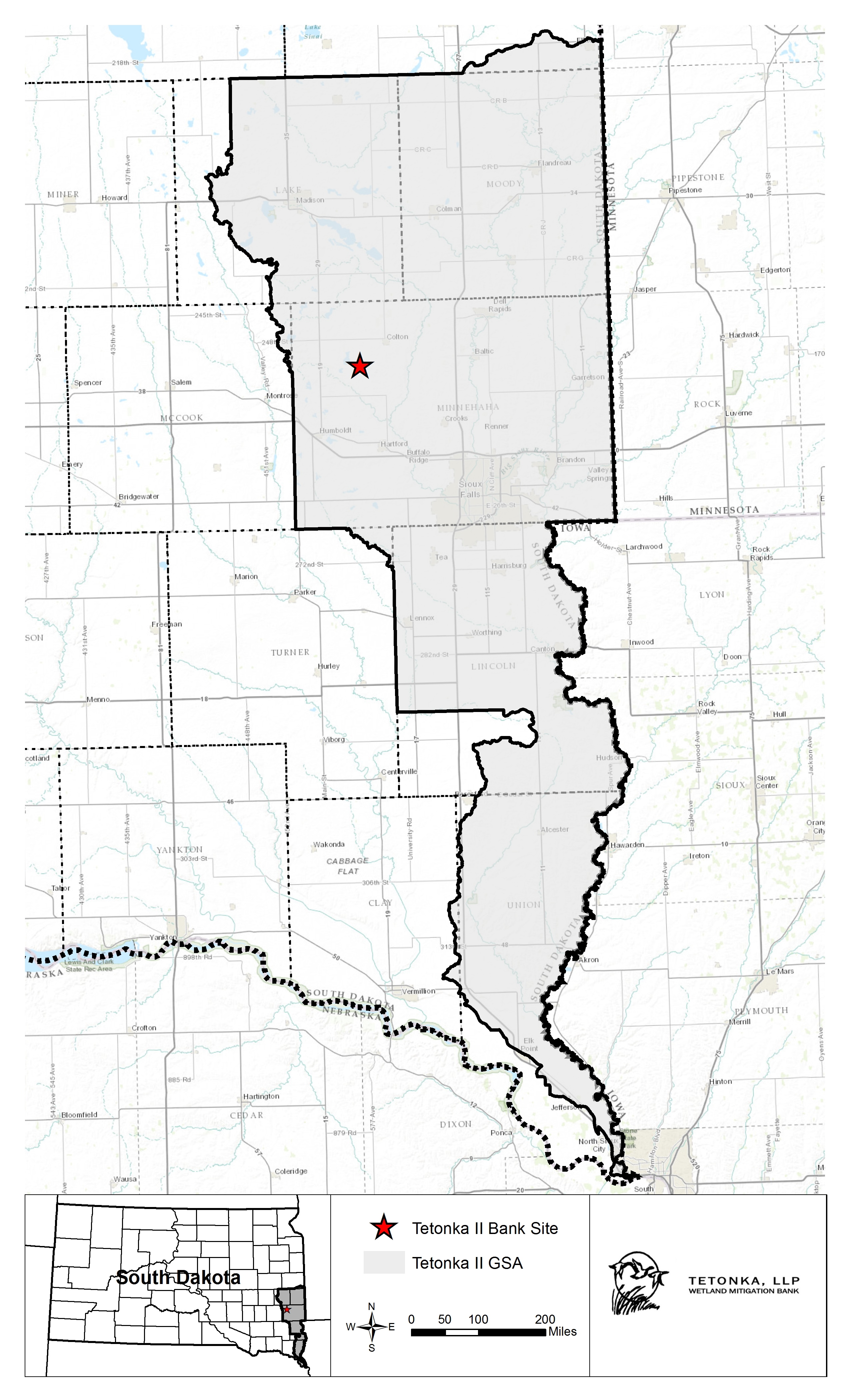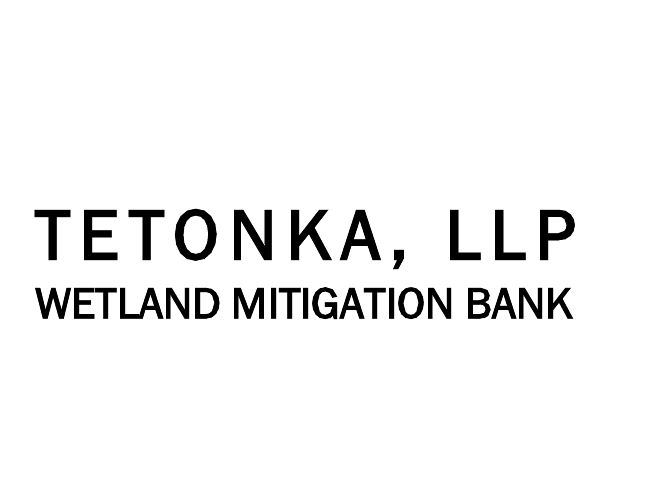Welcome to the Tetonka Wetland Mitigation Bank
The Tetonka Wetland Mitigation Bank has been authorized by the U.S. Army Corps of Engineers, Omaha District, to serve as a wetland mitigation bank within the Big Sioux River Major Watershed in southeast South Dakota (see figure). The purpose of the bank is to provide compensatory mitigation for projects which impact wetland resources where the Corps of Engineers and/or the South Dakota Department of Environment and Natural Resources have jurisdiction. As development activities affect the natural resource base in this major watershed basin, the proactive restoration of the Tetonka wetland habitats, creates an opportunity for advanced mitigation of those impacts under Section 404 (Clean Water Act) regulatory program.
The mitigation bank is operated by Tetonka, LLP. Utilizing credits from the Tetonka Wetland Mitigation Bank is a relatively simple process – identify the mitigation bank during the permit application process as the source of mitigation credits and, after the permit is issued, execute a credit purchase agreement with Tetonka, LLP.
Following payment of credit fees, the Bank's ledger will be updated with the assigned permit number and amount of credits, debited from the bank for the permittee's project. All recorded information will be forwarded to the permitting district of the Corps of Engineers, located in Pierre, South Dakota. After transfer of credits is completed, all liability, responsibility, costs, etc. for the wetland mitigation effort are entirely borne by Tetonka, LLP. Once payment is made, the permittee has no further obligations to the Corps for the mitigation project, EVER. For permittees using Bank credits, mitigation is 100% successful every time!
Geographic Service Area

Who Should Use the Bank
• Developers
• Transportation agencies
• Industrial clients (mining, etc)
• Power and energy companies
• Private landowners
• Local governments and municipalities
Some Project Examples Eligible to Use the Bank
• Subdivisions and commercial developments
• Highways, roads, bridges, airports, railways
• Mineral extraction, hauling/loading facilities
• Power plants, wind farms, transmission
• Stream stabilization, wetland fill projects

